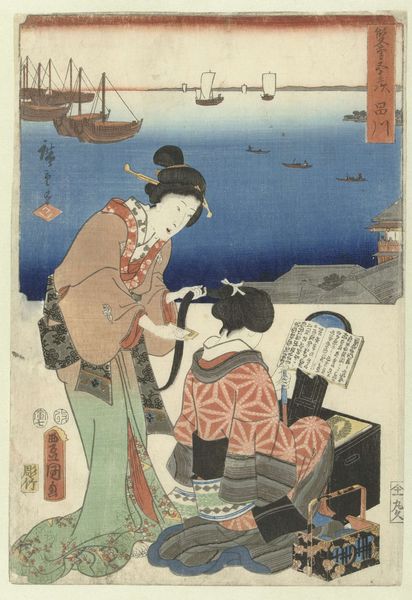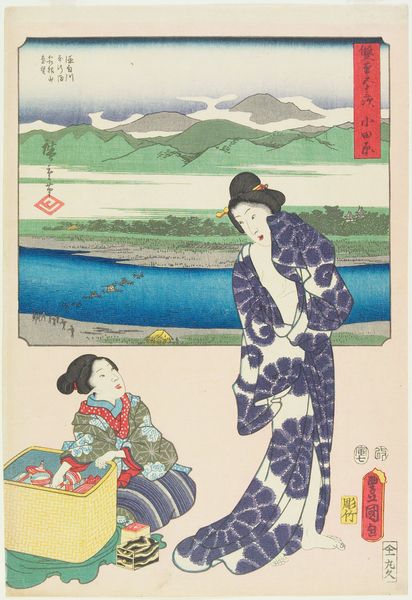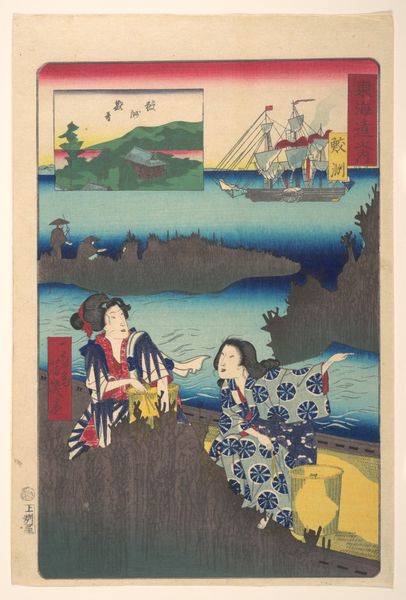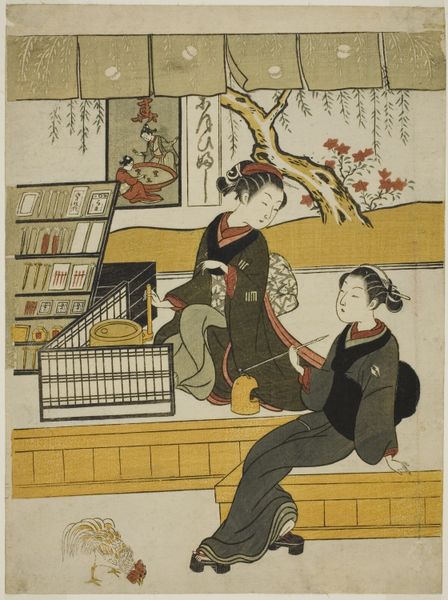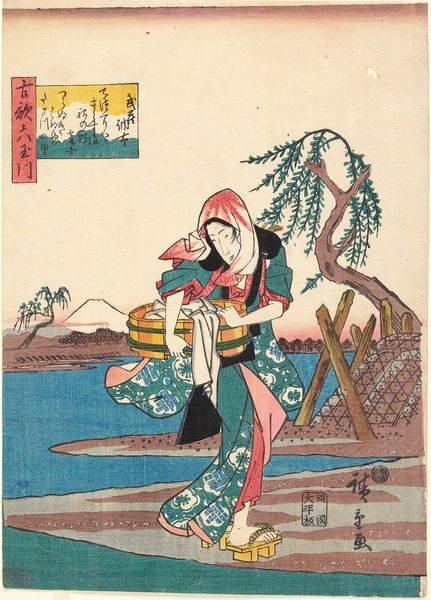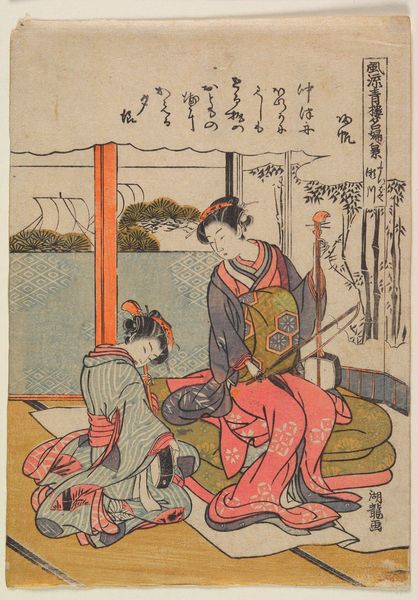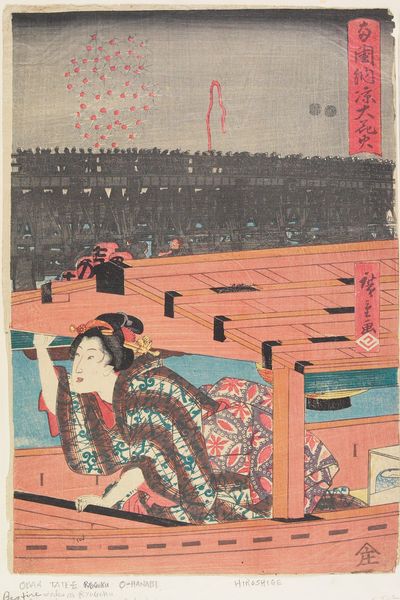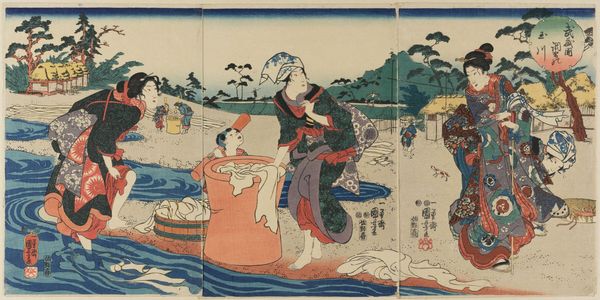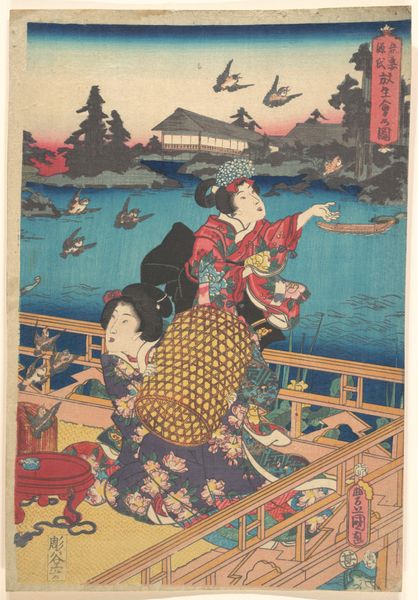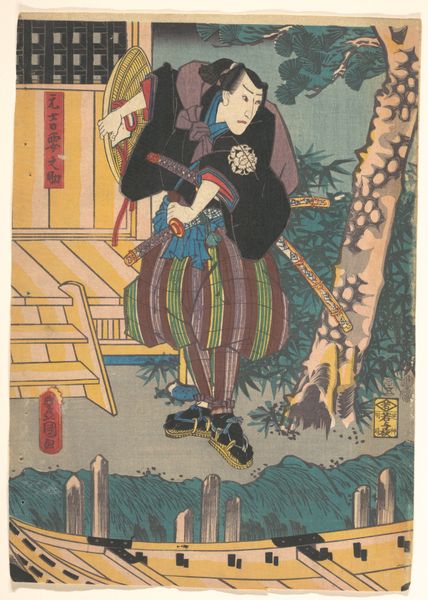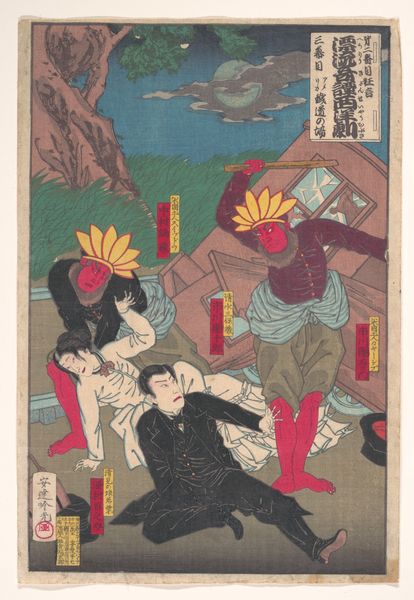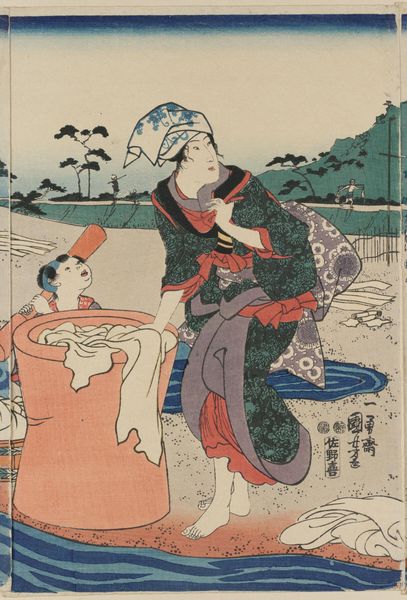
print, paper, ink, woodblock-print
#
water colours
#
narrative-art
# print
#
ukiyo-e
#
figuration
#
paper
#
ink
#
woodblock-print
#
orientalism
Dimensions: 14 9/16 × 10 1/16 in. (37 × 25.5 cm) (image, vertical ōban)
Copyright: Public Domain
Editor: Here we have Utagawa Kunisada’s woodblock print, “Okitsu,” dating back to possibly between 1854 and 1858. It's currently part of the Minneapolis Institute of Art collection. Curator: Immediately, the scene strikes me with its compositional tension. The jagged, almost menacing figures contrast starkly with the serene landscape backdrop, creating a potent emotional dynamic. Editor: Indeed, the material reality speaks volumes. Consider the process of creating these prints; each color meticulously applied, layered to produce the final image. It's the result of a highly collaborative workshop system, not just one artist's hand. Curator: Precisely. The sharp lines, the bold blocks of color—these aren't merely representational choices; they’re the very language of the medium. Notice how the artist plays with depth, flattening the scene yet still suggesting recession into the distance. Editor: And that paper—consider the production, the sourcing of materials in Edo-period Japan. It's not just a surface but a carrier of cultural significance, bearing the impressions of artistic labour. I can’t help thinking about the artisans involved in its fabrication and distribution! Curator: Observe also how the narrative unfolds through purely visual means. The distressed expressions, the positioning of the figures relative to each other and the landscape: all coalesce into a powerful dramatic scene. The ukiyo-e style really emphasizes this dramatic composition and contrasts, a deliberate artistic move. Editor: It's also worth exploring the themes prevalent in this woodblock print. Themes of societal unease might be evoked through the tension present in the print’s narrative, contrasting with the beauty of the landscape behind the foreground characters. This beauty hints at themes of transience and escapism during turbulent social periods. Curator: It’s in this dynamic exchange of aesthetic elements and implied narratives that the true value of this work resides. Editor: I agree; considering the layers of physical and socio-historical production offers unique insights into a single still frame, prompting an invitation for discourse that deepens our connection to history.
Comments
minneapolisinstituteofart almost 2 years ago
⋮
The station of Okitsu along the Tōkaidō Roadway is near Tago-no-ura, a site of great natural beauty. Here, Hiroshige shows the town and temple in the distance with fish nets hung to dry in the foreground. Kunisada illustrated a female traveler receiving a massage from a blind masseur. Taga-no-ura was the subject of a poem by Yamabe Akahito, an eighth century courtier who was later lauded as one of Japan's "Thirty-six Immortal Poets." Here, the masseur may be reciting Akahito's poem for the enjoyment of the woman: When from Tago's coast'sbarrier shadow I emerge,I am startled byMount Fuji's lofty peakClad in newly fallen snow.
Join the conversation
Join millions of artists and users on Artera today and experience the ultimate creative platform.
